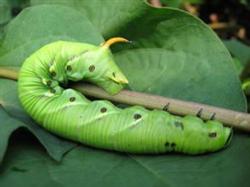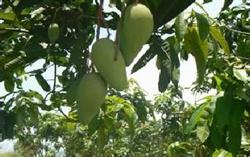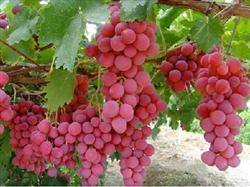Management of bagged mango seedlings in winter

Choose an open area with flat terrain and convenient drainage and irrigation, and avoid setting up a seedbed in the tuyere and areas where cold air is easy to deposit. The size of the nursery bed can be determined according to the topography, generally 100 centimeters wide and long according to the topography. Dig the seedbed into a trough-shaped rectangle 5-8 centimeters below the ground, and the soil in the trough should be dug and leveled, which is conducive to stable seedlings, heat preservation and moisturizing. After planting the seedlings, the surrounding soil will be congested around the bagged seedlings to form a soil-covered protective layer. Dig a drain on the opposite side of the seedling bed to facilitate drainage in the rainy season and irrigation in the dry season. The setting of the shade canopy can be determined according to the size of the seedling bed, and the surrounding area of the shade shed should be 30cm to 50cm larger than the seedling bed. The height of the shade scaffolding is 100cm to 150cm, so it is not easy to block the wind if it is too high. Wind barriers are installed on the windward side to avoid being harmed by strong winds and cold air. A 50cm field road is left between the seedbeds for watering, weeding and transporting seedlings. Often check the water demand of mango seedlings and the protective performance of the shade shed. If water shortage and damage are found, the shade shed should be watered and repaired in time. In case of continuous drought, flood irrigation should be used to cover the seedling bed and soil layer. It is not suitable to apply fertilizer in winter, but if the seedlings grow thin after one month of bagging, those with low content of organic matter in nutritious soil can be foliar sprayed with 0.5%-1% urea to promote seedling growth. In autumn (around October), it is not suitable to apply quick-acting nitrogen fertilizer. Potassium sulfate with a concentration of 0.5% can be sprayed once or twice with an interval of about 15 days, which can improve the cold resistance of seedlings. Seedling refining was carried out in two stages, and the first stage was before the beginning of winter. Usually the shade canopy is removed in the evening until the next day before the sun comes out, or the shade canopy is removed in cloudy days, and when there is sun, the shade canopy is built again. Attention should be paid to the local temperature not lower than 15 ℃, the extreme minimum temperature not less than 10 ℃, and the duration can be as short as 8 ℃. If the seedling tissue is still young before winter, the seedlings can be sun-dried properly in order to increase the leaf photosynthetic performance, accelerate the tissue aging and increase the cold resistance. However, it is not suitable to be exposed to strong light for a long time, so as not to cause high temperature burning seedlings. The time to stop seedling training before and after November is about one month before coming out of the nursery and planting, this period is in the high temperature season, seedling training needs to be carried out gradually, starting to sun for about 2 hours a day, and then overtime day by day. If there is no damage to the seedlings after one week, the cover of the shade canopy can be removed to improve the resistance of seedlings and the survival rate of planting. In winter, mango seedlings are prone to powdery mildew and aphids, and powdery mildew harms young tissues and leaves, which can be controlled by spraying 15% vermicellin with water 800: 1000 times. Aphids are mainly harmful to stems and leaves, but 40% omethoate 1000-1500 times can be sprayed and controlled. In places where rodent activities are frequent, rodent prevention should be done well, and poison bait can be used.
- Prev

Chemical control of mango stem rot
1 site condition Meizhou is located in the mountainous area of eastern Guangdong, with annual rainfall of 1800mm, annual average temperature of 21 ℃, annual sunshine hours of 2031 hours, and extreme minimum temperature of-2.6 ℃. The planting land is sloping land, sandy soil, thin soil, pH value 4.5, organic matter 1.65%, total nitrogen 0.083mg/kg, hydrolyzed nitrogen 112mg/kg, phosphorus pentoxide 0.
- Next

Control methods of grape diseases in rainy season
Grape downy mildew, white rot, anthracnose and other diseases have a high incidence in summer. Downy mildew can lead to fallen leaves, withered branches, rotten fruit and even death. Therefore, the China Agricultural Technology Network reminds you to strengthen the management of vineyards and prevent diseases in time in the rainy summer season. 1. Clear the garden: if in the vineyard.
Related
- Moge, come on! The staff of the peasant association in the producing area of cantaloupe were frightened when the crowd gathered.
- Causes and Solutions of low Fruit setting rate of Apple
- Symptoms and control measures of passion fruit virus disease
- Fruit growing lesson: how do apple orchards keep high yields?
- Can you build orchards in the mountains? What are the pros and cons?
- How to manage the coloring period of Crisson grape?
- This paper introduces the processing technology of two kinds of fig products.
- How much is a month for retired teachers in rural areas by 2020?
- How can strawberry planting increase sugar content? We should pay attention to management in many aspects.
- What are the cultivation techniques on how to improve the yield of golden fruit?

